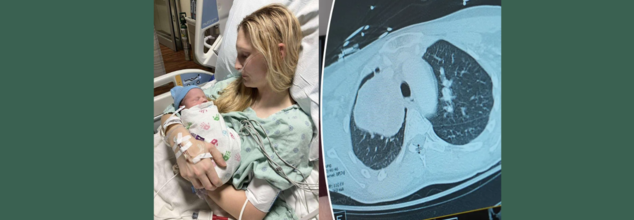
(Credit-Canva)
Your Feet Could Show These 3 Signs Of Serious Heart Health Condition
Sometimes, diseases can show signs in unexpected places. While one may mistake it for some other issue, many times knowing these unexpected symptoms can help people avoid dangerous situations like strokes or unexpected heart episodes.
Our heart is one of the most crucial parts of our body, it pumps blood throughout our body to ensure proper functioning. Even if one part of your body starts receiving less or no blood, there can be severe consequences to it.
One such unexpected place you may get symptoms of health conditions or issues is your feet. It's easy to overlook our feet, but changes there can sometimes tell us about bigger health issues, specifically problems with our heart and blood flow. Keep an eye out for things that seem unusual.
These simple-to-spot signs on your feet, even if they feel a bit sore, could be an early signal that something isn't quite right with your cardiovascular system. This system, which includes your heart and blood vessels, is super important, and problems with it are a leading cause of serious illness and even death. So, paying attention to your feet could be a way to catch potential trouble early.
Signs of Heart Diseases In Your Feet
When we think about heart problems, we often picture someone clutching their chest in pain. While chest pain is definitely a key symptom, cardiovascular disease – which covers all sorts of issues with your heart and blood vessels – can show up in other ways too. Things like heart failure, where your heart can't pump blood properly, or coronary heart disease, where the blood vessels to your heart get blocked, are all part of this.
According to American Academy of Dermatology, there are three specific things to look for on your feet and toes that could be linked to problems with your heart and blood circulation. These aren't just normal aches and pains; they are specific changes that could indicate something more serious is going on.
Painful Lumps on Toes (Osler Nodes)
Small, tender bumps on your toes or fingers, called Osler nodes, could signal a heart infection like infective endocarditis. This infection affects the heart's lining and valves. These painful lumps can appear and disappear within days. While they go away on their own, the underlying infection needs treatment with antibiotics, and sometimes surgery, to clear it up.
Swelling in Your Feet (Oedema)
Puffy or swollen feet, known as oedema, might indicate your heart isn't pumping blood well. When the heart struggles, fluid can build up in the body, often pooling in the feet, ankles, and lower legs due to gravity. This swelling can even extend up the legs. The NHS notes this swelling is usually less in the morning and worsens throughout the day when you're standing.
Bluish Toes
Toes turning bluish, not just from cold, can mean they aren't getting enough oxygen-rich blood. Since the heart pumps oxygenated blood, this color change suggests a potential issue with the heart or blood vessels affecting circulation to your extremities. If you regularly notice this bluish tint, especially with other symptoms, it's important to see a doctor to check for underlying cardiovascular problems.

Credits: Northwestern Medicine
Breathlessness During Pregnancy? Cough Turned Out To Be Stage 3 Melanoma For This Woman; Doctors Share Details
What started out as a persistent cough while pregnant almost turned into a tragedy for 26-year-old Illinois' MaKenna Lauterbach. At 36 weeks' pregnancy, the would-be mom thought that her symptoms were normal for pregnancy exhaustion in late stages—until she started gasping for air from doing minor chores. What ensued was a time-sensitive, life-saving battle of wits between world-class experts, state-of-the-art medical treatments, and an outcome against all odds.
Pregnancy tends to be accompanied by fatigue, shortness of breath, and changing physical needs. So when MaKenna began feeling breathless and having a persistent cough while caring for her horses, she attributed it to third-trimester exertion. Walking to the barn made her breathless—as if she'd run a marathon. But her symptoms did not get better, and by the time she was full term, her condition had progressed dramatically.
Even with her deteriorating symptoms, imaging tests were initially shunned. Medical staff are naturally averse to putting pregnant women through the stress of radiation exposure, particularly when in the late stages of pregnancy. But MaKenna's condition rapidly worsened—coughing gave way to vomiting and intense respiratory distress, prompting emergency admission to hospital.
Just a few days from her due date, imaging at last showed the devastating discovery—a grapefruit-sized tumor wedged in her chest, obstructing the artery to her right lung. The tumor was suffocating her airway and threateningly restricting oxygen delivery, placing mother and baby alike in danger.
MaKenna was flown to Northwestern Memorial Hospital in Chicago, where she was admitted to the intensive care unit. Within a short time after arrival, she went into labor. Her blood pressure rose, the baby became distressed, and physicians realized that they had only hours—possibly minutes—to move.
"Her lungs were impaired because of the tumor, and labor was also slowing her down to breathe. The danger of respiratory failure and cardiac arrest was very real," said Dr. Lynn Yee, a maternal-fetal medicine specialist at Northwestern Medicine.
MaKenna was put on extracorporeal life support (ECMO)—a life-supporting device that circulates oxygenated blood outside of the body—and received an emergency C-section. Her baby boy, Colter, was delivered safely, healthy in spite of the wild ride he had getting here.
For MaKenna, there was a mix of joy and fear. "Because of the tumor, the delivery came so rapidly. I was mourning the birth plan I had been planning for months, while also coping with the news of my surprise diagnosis," she explained.
What is Rare and Aggressive Melanoma?
After the birth, physicians initiated additional tests. A bronchoscopy test showed the tumor was stage 3 melanoma—a skin cancer that had somehow traveled and developed inside her chest.
This posed a singular challenge. "There isn't much written about or a lot of published cases on how to treat melanoma that comes in this way," said Dr. Kalvin Lung, a thoracic surgeon at Northwestern Medicine. "We had to fall back on the knowledge our team has gained from years of taking care of complex thoracic cases."
Prior to surgery, doctors gave three doses of immunotherapy to shrink the tumor. The therapy was effective in diminishing its size from 13 centimeters to 9 centimeters, thus enabling the subsequent action—surgery.
The procedure itself was extremely complicated. Dr. Lung and Dr. Chris Mehta, a cardiac surgeon with Northwestern Medicine, were required to remove MaKenna's right lung entirely, part of the pulmonary artery, and related lymph nodes. The tumor had invaded large blood vessels and spread throughout all three lobes of the right lung. "We may have a case like this every few years," said Dr. Mehta.
Now 27, MaKenna is stable and continues her immunotherapy treatments. Her scans show no new signs of metastatic cancer, and the tumor site remains inactive. She’s focusing on motherhood, recovery, and gratitude.
“Colter is the best baby—always smiling and sleeping through the night,” she said. “I can’t say enough about the incredible medical team that saved my life. Because of them, I’m here today.”
Dr. Yee continued, "To see MaKenna doing so well, and Colter thriving, brings tears to my eyes. It demonstrates what coordinated, compassionate medical care can do."
Can Pregnancy Shadow Life-Threatening Illnesses?
Pregnancy is commonly accompanied by a variety of physical changes—fatigue, shortness of breath, backaches, nausea, and swelling. Although these symptoms are typically harmless, they sometimes mask the signs of serious underlying medical conditions. This crossover between normal pregnancy pains and signs of potentially fatal diseases can mean that the illnesses are not diagnosed until late, as in the recent case of MaKenna Lauterbach—a 26-year-old woman whose relentless cough and shortness of breath throughout her pregnancy proved to be stage 3 melanoma in her chest.
Shared Symptoms of Pregnancy and Illness Mimic One Another
Most life-threatening conditions have symptoms that are identical to those of pregnancy. Diseases such as heart disease, blood clots, infections, and even cancer may appear with fatigue, chest pain, shortness of breath, or swelling—commonly attributed to normal pregnancy complaints. This similarity results in a diagnostic blind spot.
For example:
- Shortness of breath can be due to increased oxygen demand during pregnancy but can also result from lung disease or heart failure.
- Swelling in late pregnancy is normal but may indicate preeclampsia, kidney disease, or a tumor compressing veins.
- Nausea and vomiting are usual in the first trimester but may also obscure gastrointestinal cancers or liver disease.
Hesitation With Diagnostic Imaging in Pregnancy
One of the greatest difficulties is that physicians tend to shun some diagnostic tests such as X-rays, CT scans, or MRIs during pregnancy in order to avoid exposing the fetus to radiation. Although this prudence is necessary, it can lead to life-threatening delays if a critical condition is suspected but not diagnosed. In MaKenna's situation, imaging was delayed until her symptoms became critical—by that time, a tumor had obstructed large lung arteries.
Immune and Hormonal Alterations Can Speed Up Underlying Disorders
Pregnancy dampens some immune reactions to shield the developing fetus. Yet, this changed immune environment can give rise to or speed up latent diseases like cancer, autoimmune disorders, or infections. Hormonal spikes can also nourish hormone-sensitive tumors, elevating the risk of complications.
Fetal Over Maternal Prioritization in Emergency Situations
During emergencies, choices are frequently made to safeguard the baby—even at the expense of delaying the mother's treatment. This preference can make cases more complex when the mother's declining health impacts fetal welfare directly. Delayed diagnosis or treatment of maternal illness can put both lives at increased risk.
Emotional and Cognitive Biases
Numerous pregnant women—such as MaKenna—will minimize their symptoms, assuming they are just a result of pregnancy demands. There is also a cultural pressure to suffer through pregnancy, and this can cause women not to speak up or seek second opinions when something does not feel right.
Pregnant patients with severe medical issues frequently need treatment from several specialists: obstetricians, oncologists, cardiologists, or pulmonologists. Without an integrated and coordinated effort, important warning signs can be overlooked or insufficiently explored. MaKenna's survival was partly because of the rapid collaboration between maternal-fetal medicine, thoracic surgery, oncology, and intensive care specialists.
Pregnancy never needs to stand in the way of diagnosing and treating potentially life-threatening diseases. Awareness, early investigation, and multidisciplinary care are critical in distinguishing normal pregnancy symptoms from red flags. Pregnant women must always feel confident enough to voice their concerns, clarify the situation, and stand up for their well-being—because, as MaKenna's experience demonstrates, an early diagnosis can save not just one, but two lives.

Credits: Canva
How Electrical Stimulation Is Quietly Transforming Psychiatry
Over the past two decades, a lot has changed in psychiatry. The field has embraced many unexpected tools, including electricity. Once largely the realm of pharmaceuticals and talk therapy, the field is undergoing a technological evolution powered by devices that target the brain's circuitry. This is known as electroceuticals. These approaches offer new hope for people with severe, treatment-resistant psychiatric disorders such as depression and obsessive-compulsive disorder (OCD).
The Rise of Electroceuticals
These usually refer to therapies that use electrical stimulation to modulate nervous system activity. These technologies aim to correct misfiring circuits in the brain, much like how a pacemaker regulates the heart. The therapies now being studied or offered include:
- Deep Brain Stimulation (DBS)
- Vagus Nerve Stimulation (VNS)
- Transcranial Magnetic Stimulation (TMS)
- Focused Ultrasound Neuromodulation
While many of these interventions are still being evaluated for efficacy in psychiatric care, they are already in use for neurological conditions like Parkinson's disease. It lend credibility to the crossover.
Chemical Imbalance And Beyond
Historically, psychiatry has operated on the assumption that mental illnesses stem primarily from chemical imbalances. This led to a focus on medications like SRRIs. However, recent research began shifting the focus from brain chemistry to brain circuitry. Neurosurgeons and psychiatrists alike now see disorders like depression not as chemical shortages but as network dysfunctions - where certain brain circuits fall to properly connect or regulate mood and behavior.
The shift is also shown in the treatment of major depressive disorder (MDD) with DBS. Electrodes implanted deep in the brain deliver high-frequency pulses to specific regions believed to be involved in mood regulation. Though still considered experimental for depression by the US Food and Drug Administration (FDA), DBS is FDA-approved for treatment-resistant OCD and shows promise in clinical trials.
Treatment-Resistant Disorder - Searching For The Solution
As per reports, an estimated 30% of people with depression and up to 60% with OCD do not respond to traditional treatments. For these individuals, electroceutical may also represent the only available hope. The access, however, is still very limited. The reason is cost and insurance coverage. However, with devices like VNS and TMS, which have now gained FDA clearance and some insurance support, the accessibility has been better. Though DBS and focused ultrasound remain largely available only through clinical trials.
The emotional and physical toll on patients can be considerable. Surgeries carry risks—such as infection, hemorrhage, or hardware complications—and require significant recovery time. Even successful cases often need supplementary treatments like medication or psychotherapy to sustain benefits.
What Technologies Are Available?
Deep Brain Stimulation (DBS): Involves implanting electrodes in the brain to stimulate key regions. It has shown success in regulating mood in patients with severe depression and OCD. Some report life-changing relief after decades of suffering, although results vary.
Vagus Nerve Stimulation (VNS): Sends signals via the vagus nerve to influence brain activity. Approved for treatment-resistant depression, its effectiveness is debated, with mixed outcomes in clinical trials.
Transcranial Magnetic Stimulation (TMS): Uses magnetic pulses delivered through a coil placed on the scalp. It’s non-invasive and increasingly accessible, though it requires multiple sessions and benefits may fade over time.
Focused Ultrasound: The newest contender, it uses sound waves to either ablate or modulate deep brain tissue. Still in early research stages, it’s entirely non-invasive and could become a game-changer due to its precision and safety profile.

Credits: Canva
Is There A Link Between Chronic Pain And Depression?
Have you ever felt so tired that you had your joints aching, shaky hands, recurring headaches, and excessive weariness. Did you feel like you were just having a bad day and your body felt too tired? They are not only symptoms of a bad day. These are small but persistent symptoms of a larger problem: chronic pain. What is chronic pain? Pain that persists for more than three months is no longer considered transient or situational. It causes a condition that lowers not only one's physical health but also one's whole quality of life.
Chronic pain is a widespread issue, impacting nearly 30 percent of people globally. It can arrive slowly or after an injury, and once it settles in, it often refuses to leave. Over time, it can dull not just physical strength, but emotional resilience. The discomfort starts to bleed into other areas — your sleep, energy levels, social life, and mental well-being.
The Link Between Pain and Mood
It’s no surprise that ongoing physical pain can be emotionally draining. But recent research points to something deeper: a strong biological link between chronic pain and depression. When pain is felt in multiple areas of the body — known as multisite chronic pain — the risk of developing depression rises sharply. In fact, people with this type of pain are nearly four times more likely to experience depressive symptoms.
What makes this connection particularly important is that it’s not just psychological. New scientific methods have revealed that chronic pain and depression might share genetic roots. Inflammatory markers like C-reactive protein (CRP) — commonly elevated in those with ongoing pain — are also linked to mental health issues. In other words, the pain-depression link may not just be coincidental. It could be caused by underlying biological processes.
When Pain Spreads, So Does Its Impact
Not all types of pain affect mental health equally. Some forms — like facial pain, stomach pain, and chronic headaches — have been found to carry a stronger link to depression. As pain spreads across the body, the emotional toll deepens. It’s not just the pain that becomes unbearable — it’s the sense of being worn down physically and mentally, day after day.
Even simple tasks can become overwhelming. Chronic pain can make everyday actions feel exhausting, while also disrupting sleep and making recovery more difficult. The longer it lasts, the more likely it is to impact work, relationships, and overall identity.
Why Treating Pain Means Treating the Mind Too
One of the key takeaways from the research is that chronic pain and depression often need to be treated together. Focusing only on physical relief without addressing the emotional damage can leave recovery incomplete. Similarly, treating mental health without easing physical symptoms may not be effective.
The emerging mind-body approach encourages healthcare providers to look at both aspects — helping patients manage pain while also supporting their emotional well-being. Whether through therapy, lifestyle changes, medication, or a mix of all three, the goal is to offer holistic care that treats the whole person.
What You Should Know
- Pain in multiple areas raises the risk of depression. The more widespread the discomfort, the greater the emotional burden.
- Inflammation plays a role. Markers like CRP may explain the physical-mental connection.
- Genes can make a difference. Some people may be more genetically prone to both conditions.
- There may be causation, not just correlation. Advanced studies suggest that chronic pain might lead to depression biologically.
- Mind and body are connected. A comprehensive approach is essential to truly heal.
© 2024 Bennett, Coleman & Company Limited

